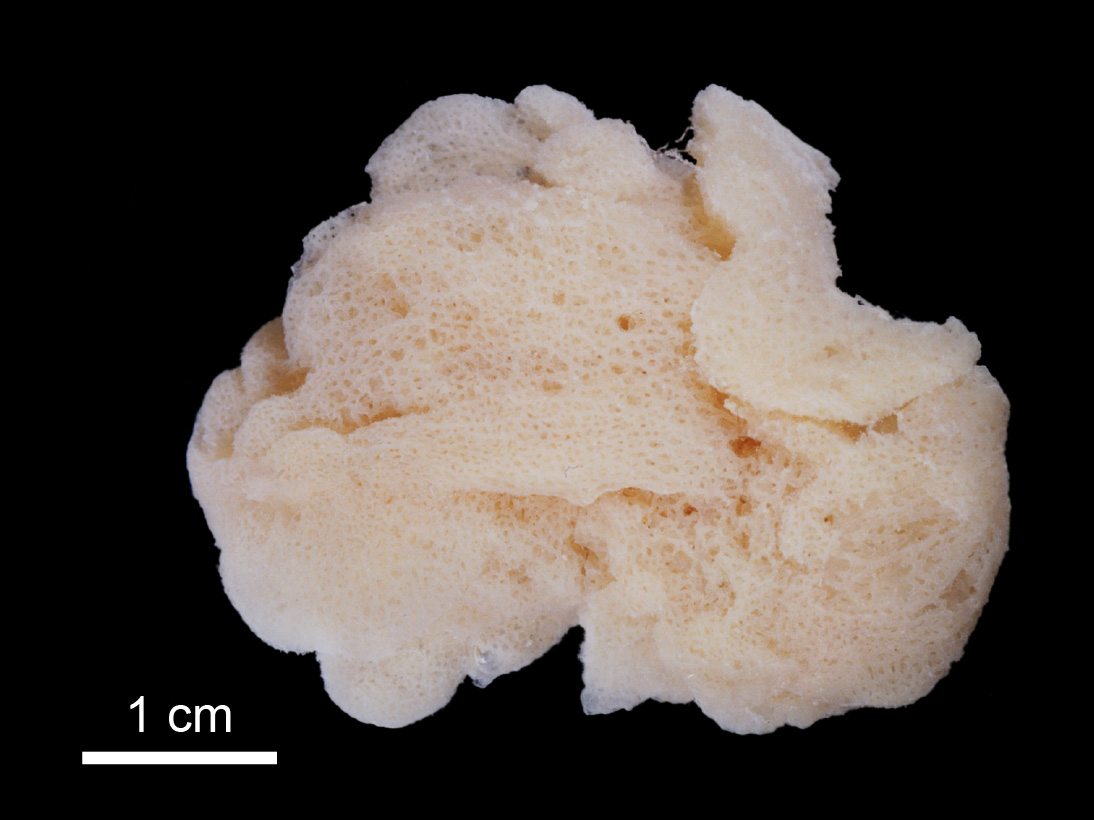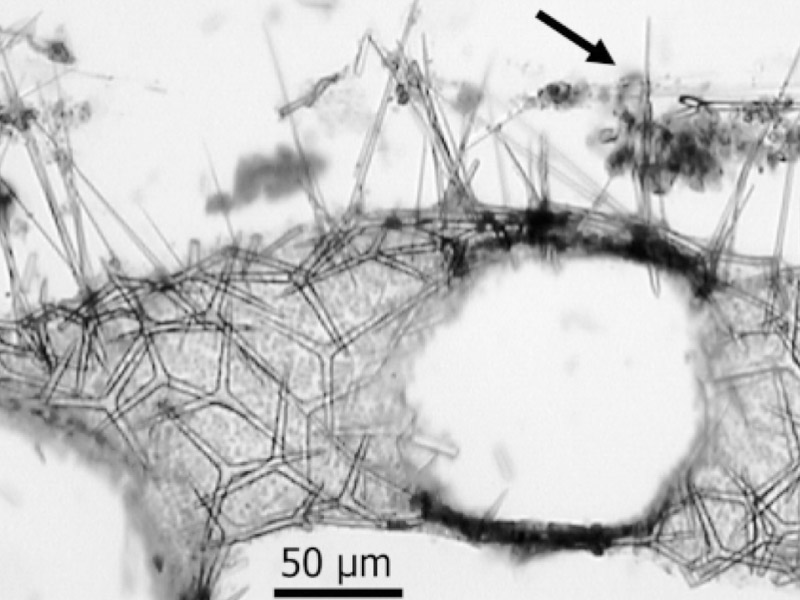Morphological description (show/hide)
| Dense mass of small anastomosing tubes, each with diameter of about 0.5mm, cushion shaped, with only little space between the tubes (< 1mm). | | yellow | | yellow-beige | | No oscules visible macroscopically | | Soft | | Smooth | | Irregular tangential layer of triactines, build the walls of tubes. Tube walls are 20-30 um thick. Triactines are not really densely packed but do overlap with their actines, so that not more than five triactines are partially stacked above each other to form the tube walls. No differentiation and/or zonation of triactines was observed. Diactines are present in some areas of the cormus, perpendicular to the tube wall, their thicker proximal bases slightly protruding through he sponge wall into the tube. Diactines are numerous at the external surface of the cormus, but are also found in some areas within the cormus, on the external surfaces of larger tubes, without a recognisable distinct pattern of localisation. | | No defined ectosomal skeleton, but diactines are found in some areas perpendicular to, and protruding through, the walls of tubes. | | The spicular skeleton consists of regular, cylindrical triactines of a single size (actines : 68-(77.7)-84x8-(9.4)-12um), with distal end ofactines slightly undulated, and diactines (90-( 164.4 )-220x2-(3.12)-6um). Diactines have one thin, sharply pointed end (distal) and one thicker, blunt end (proximal). Additionally, a few smaller, conical triactines were found, representing young, growing spicules. No zonation and/or differentiation of triactincs was observed. Diactines are concentrated in the external surface but are also found within cavitics of the cormus on the external surfaces of tubes. |
|





